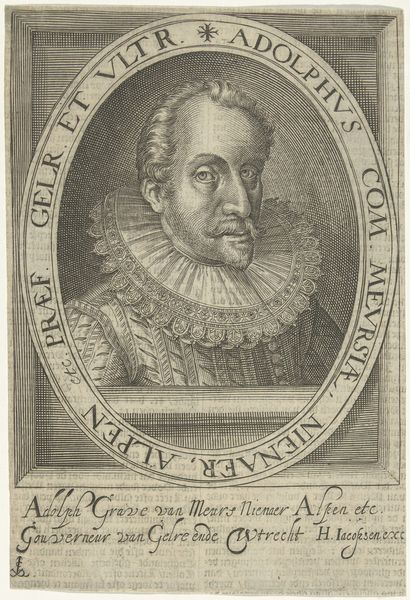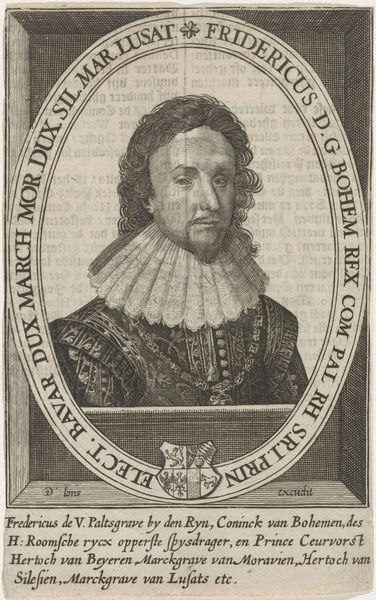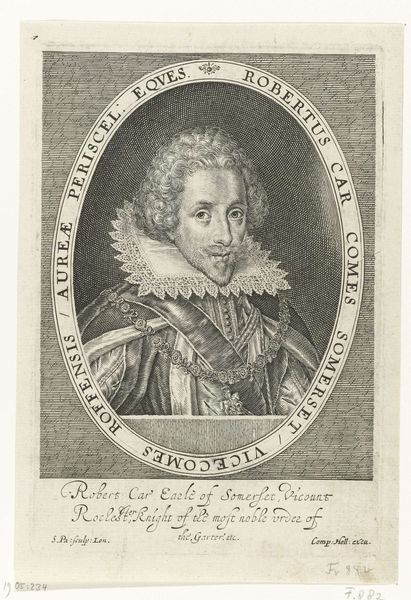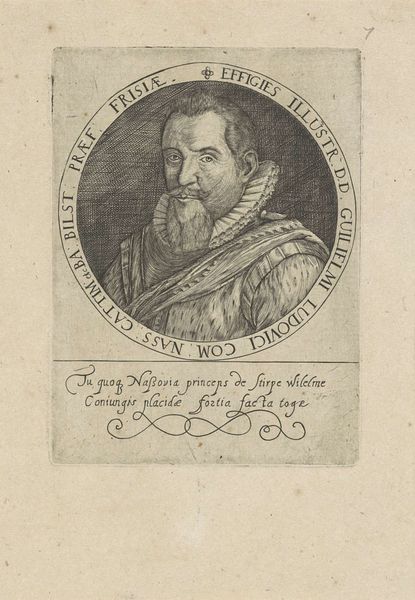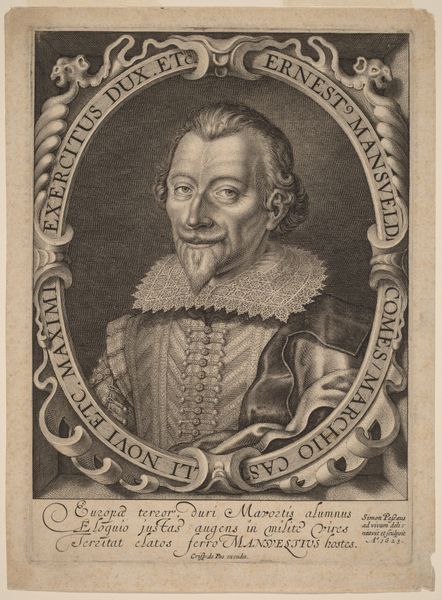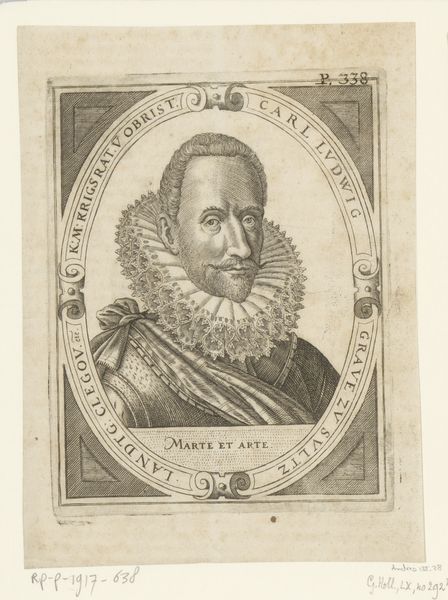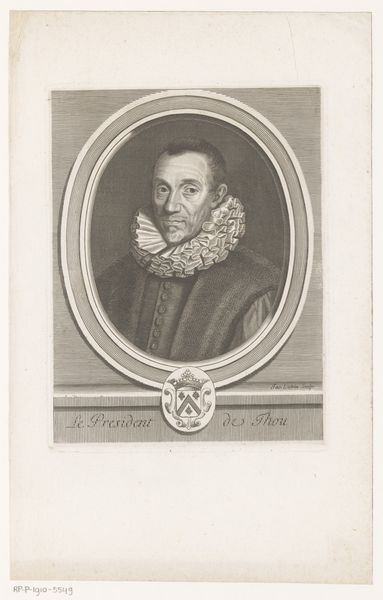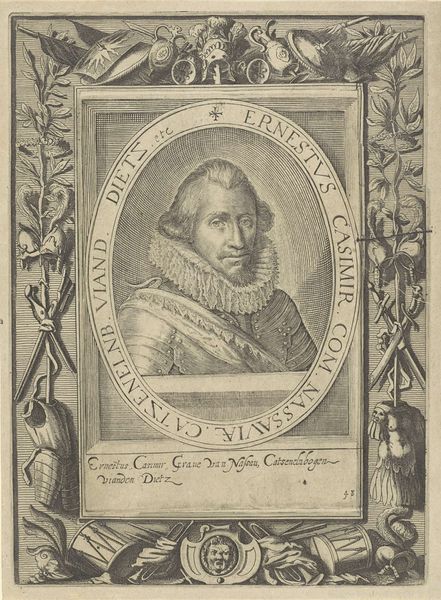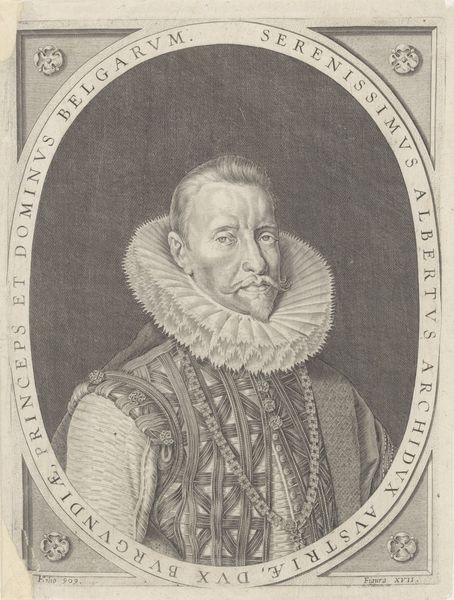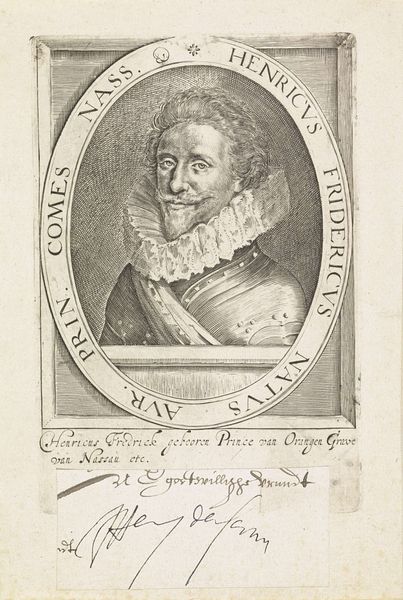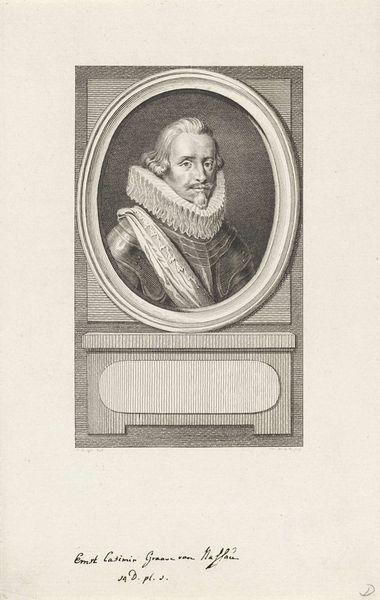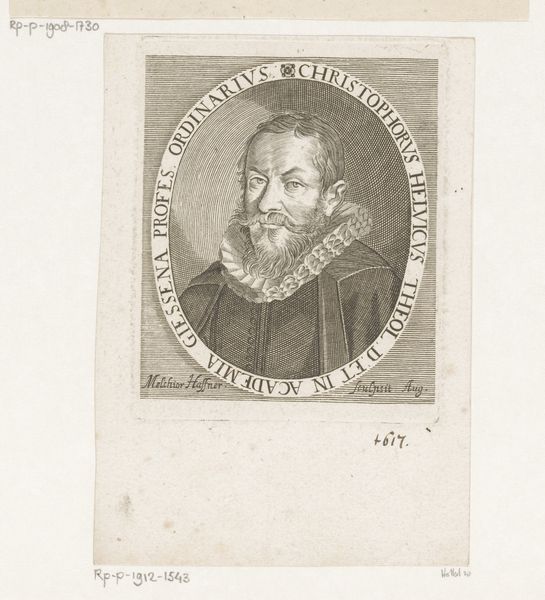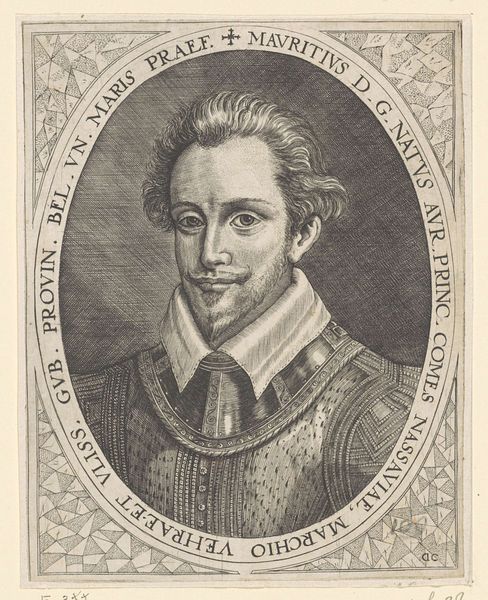
engraving
#
portrait
#
baroque
#
old engraving style
#
figuration
#
line
#
portrait drawing
#
history-painting
#
engraving
Dimensions: height 186 mm, width 159 mm
Copyright: Rijks Museum: Open Domain
This is an anonymous portrait of Maurits, Prince of Orange, an etching made without a specified date. Maurits held immense power in the Dutch Republic during a transformative period of its history. Consider the implications of this being an etching rather than a painting. The printmaking medium allowed for wider distribution, which would have amplified the portrait's impact as a symbol of power and leadership during the Dutch Golden Age. Maurits was a Stadtholder, a position which was often associated with military leadership and governance during the time. Think about how portraits function to construct and legitimize authority. What does it mean to present someone as a leader? How does an image like this shape not only how people saw Maurits, but also how they understood the very concept of leadership? The artist uses traditional representations of power to emphasize the idea of Maurits’s importance, while the mass production of the portrait allowed for new audiences to see the piece. This portrait serves as a cultural artifact that both embodies and reinforces existing societal structures, while hinting at the emergence of new political identities in the context of a rising Dutch Republic.
Comments
No comments
Be the first to comment and join the conversation on the ultimate creative platform.
